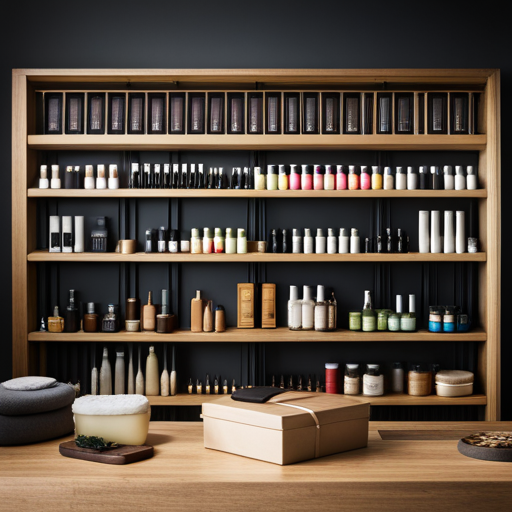Pre-Pageant Hair Trimming: When and How

Get ready to trim your way to flawless locks!
In the world of pageantry, every detail counts, and your hair is no exception.
From split ends to shape maintenance, knowing when and how to trim your hair is crucial for a polished and picture-perfect look.
In this article, we’ll explore the art of pre-pageant hair trimming, covering everything from DIY techniques to professional options, ensuring your hair shines as brightly as your stage presence.
Importance of Timing
While pre-pageant hair trimming is crucial, the timing of the trim is equally significant to ensure optimal results. Understanding the best timing for a hair trim involves knowledge of the hair growth stages.
Hair goes through three main stages of growth: anagen, catagen, and telogen. The anagen phase is the active growth stage, lasting anywhere from two to seven years, and determines the length of the hair. The best time for a trim is during the early to mid-anagen phase when the hair is actively growing. Trimming during this phase promotes healthy hair growth and helps maintain the desired length and style.
Conversely, cutting hair during the catagen or telogen phases, which are the transitional and resting stages, may not yield the best results. Trimming during these stages may result in uneven growth and disrupt the hair’s natural cycle. Understanding the hair growth stages and their impact on the outcome of a trim is crucial for achieving the best results.
Therefore, timing the pre-pageant hair trim to coincide with the early to mid-anagen phase is essential for maintaining healthy, vibrant hair.
Signs Your Hair Needs Trimming
The recognition of your hair’s need for trimming is crucial in maintaining its health and appearance. Preventive measures play a significant role in ensuring healthy hair. Understanding the signs that indicate a need for trimming is essential in any self-care maintenance routine.
One of the most common signs that your hair needs trimming is split ends. When the hair cuticle is damaged, it can cause the hair to split into two or more strands, which not only affects the hair’s appearance but also its overall health.
Another sign is when the ends of your hair start to look and feel dry and rough. This can occur due to the natural wear and tear of the hair over time.
Additionally, if your hair looks frizzy and lacks its usual shine, it may be a sign that it needs a trim. Regularly monitoring these signs and taking appropriate action through a consistent maintenance routine will help keep your hair in optimal condition.
Tools for DIY Trimming
To effectively address the signs of hair in need of trimming mentioned in the previous subtopic, it is essential to have the appropriate tools for DIY trimming. When it comes to hair cutting at home, having the right tools is crucial for achieving the desired results.
The basic tools for DIY hair trimming include sharp hair-cutting scissors, a fine-tooth comb for sectioning and detangling the hair, and hair clips to keep sections in place while trimming. It’s important to invest in high-quality hair-cutting scissors as they ensure a clean cut and minimize split ends. Additionally, having a handheld mirror or a three-way mirror can be helpful for checking the back of the hair during the trimming process.
For those looking to trim their hair at home, there are various DIY tools available in the market, such as haircutting kits that include scissors, combs, and other essential accessories. These kits provide a convenient and cost-effective solution for maintaining hair between salon visits. However, it’s crucial to follow proper techniques and guidelines when using DIY hair-cutting tools to avoid any mishaps and achieve a professional-looking result.
Techniques for Trimming Hair
When it comes to trimming hair, it’s essential to focus on split end prevention techniques to maintain healthy locks.
Proper scissor handling techniques are also crucial for achieving precise and even trims.
These two key points will be explored in detail to provide readers with practical insights for achieving professional-looking results at home.
Split End Prevention Techniques
Consider implementing regular hair trims as a preventive measure for split ends. Preventing breakage and maintaining healthy hair are essential in avoiding split ends. Trimming the hair every 6-8 weeks helps to remove frayed, damaged ends, preventing the splits from traveling further up the hair shaft.
Additionally, using a wide-tooth comb to detangle wet hair, avoiding excessive heat styling, and applying a leave-in conditioner to the ends can aid in preventing split ends. It’s important to use the right hair care products suitable for your hair type and to minimize chemical treatments that can weaken the hair.
Proper Scissor Handling Techniques
Implementing proper scissor handling techniques is crucial for achieving precise and effective hair trimming, which is essential for maintaining healthy, split end-free hair and attaining the desired polished look for the pageant. To ensure the best results, it’s important to maintain the scissors regularly and use precision cutting techniques. Proper scissor maintenance includes regular cleaning, oiling, and sharpening to keep the blades sharp and free from debris. When it comes to precision cutting techniques, it’s vital to hold the scissors correctly, use the right tension, and employ the appropriate cutting angles to achieve the desired hair shape and texture. These techniques not only result in a professional and polished appearance but also contribute to the overall health and vitality of the hair.
| Scissor Maintenance Techniques | Precision Cutting Techniques |
|---|---|
| Regular cleaning | Correct scissor holding |
| Oiling | Proper tension |
| Sharpening | Appropriate cutting angles |
Professional Trimming Options
When it comes to professional trimming options, there are two main choices: visiting a salon or having a stylist come to your home.
Each option has its own set of advantages and considerations that should be carefully weighed.
Finding the right stylist who understands your hair type and the look you are aiming for is crucial for achieving the best results.
Salon Vs. At-Home
Professional hair trimming options for pre-pageant preparation include both salon and at-home services, each offering distinct advantages and considerations. At-home benefits include convenience, cost-effectiveness, and the ability to maintain the trim over time. However, salon expertise provides professional assessment, precision, and access to specialized techniques. Consider the following table to weigh the options:
| Salon Expertise | At-Home Benefits |
|---|---|
| Professional assessment | Convenience |
| Precision | Cost-effectiveness |
| Specialized techniques | Ability to maintain trim |
When deciding between salon expertise and at-home benefits, it’s essential to consider factors such as your hair type, desired style, and personal comfort with DIY techniques. Ultimately, the choice between the two options depends on your specific needs and preferences.
Now, let’s delve into the importance of finding the right stylist for your pre-pageant hair preparation.
Finding the Right Stylist
Securing a skilled stylist is crucial for professional pre-pageant hair trimming. When selecting a stylist for pre-pageant hair care maintenance, it’s essential to consider their experience with various hair textures and styles. Look for a stylist who has a strong background in working with pageant contestants and understands the specific requirements for stage-ready hair.
Consider seeking recommendations from fellow competitors or pageant coaches to find a stylist who is well-versed in creating polished and camera-friendly looks. Additionally, review the stylist’s portfolio to ensure they have a track record of delivering exceptional results for pageant contestants.
It’s also important to communicate openly with the stylist about your hair care routine and any specific concerns you may have to ensure that the trimming process aligns with your overall hair care maintenance plan.
Tips for Post-Trim Hair Care
After trimming your hair in preparation for a pageant, it is essential to establish a post-trim hair care routine to maintain its health and vitality. Post trim styling is crucial to keep your hair looking its best. Protective hairstyles can help minimize damage and maintain the integrity of your freshly trimmed locks. Here are some tips for post-trim hair care:
-
Moisturize Regularly: Use a hydrating hair mask or deep conditioner at least once a week to keep your hair nourished and prevent dryness and breakage.
-
Avoid Heat Styling: Minimize the use of heat styling tools such as straighteners and curling irons to prevent further damage to your trimmed hair.
-
Gentle Detangling: Use a wide-tooth comb or a detangling brush to gently remove knots and tangles, starting from the ends and working your way up to the roots.
-
Protective Hairstyles: Opt for protective hairstyles like braids, buns, or ponytails to keep your ends tucked away and shielded from environmental stressors.
-
Regular Trims: Schedule regular trims every 6-8 weeks to maintain the shape and health of your hair, preventing split ends and breakage.
Frequently Asked Questions
What Are the Best Hairstyles to Consider Before Getting a Pre-Pageant Hair Trim?
When considering the best hairstyles before a pre-pageant hair trim, it’s crucial to prioritize hair care and growth. Opt for low-maintenance styles to minimize heat damage. Embrace natural textures and consider protective styles to maintain hair health.
Can I Still Use Heat Styling Tools After Trimming My Hair?
After a hair trim, it’s essential to prioritize post-trim care to maintain hair health. Using heat styling tools sparingly and at lower temperatures, along with exploring non-heat styling options, can help preserve the trim and overall hair condition.
How Often Should I Get a Professional Trim Leading up to a Pageant?
Regular professional hair trims are essential for maintaining healthy hair, as they promote growth and prevent split ends. Leading up to a pageant, aim for trims every 6-8 weeks to maintain a polished and well-maintained hairstyle.
Are There Any Specific Vitamins or Supplements I Should Take to Promote Hair Growth After Trimming?
To promote hair growth after trimming, consider incorporating vitamin supplements such as biotin, collagen, and omega-3 fatty acids into your hair care routine. These supplements can support post-trim maintenance and aid in healthy hair growth.
What Are the Best Products to Use to Maintain the Health and Shine of My Hair After Trimming?
Hair care is essential post-trimming to maintain the health and shine of your hair. Use styling products that provide shine enhancement and split end prevention. Look for products with nourishing ingredients like argan oil and keratin.
Conclusion
In conclusion, timing is crucial for pre-pageant hair trimming to maintain a healthy and polished look. Recognizing the signs that your hair needs trimming is essential, and having the right tools and techniques for DIY trimming can save time and money.
Professional trimming options are also available for those who prefer a professional touch. Remember to take good care of your hair after trimming to ensure it stays in top condition.
After all, a little trim can go a long way.





